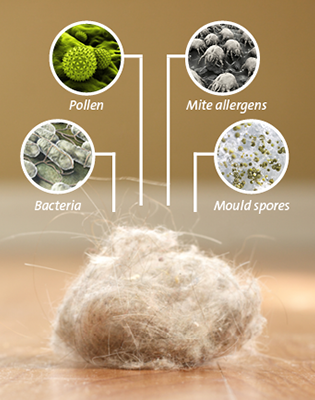1. Minimize dust-gathering knickknacks, especially in rooms where you spend a lot of time, like living areas and bedrooms, says microbiologist Mark Sneller, owner of Aero-Allergen Research in Tucson, Arizona, and author of Family Health Guide to Better Indoor Air Quality.
2. If you're allergic to dust mites or wake up with a stuffy nose, consider encasing your mattresses and pillows in zippered, allergen-reducing covers. Twice a year, wash the covers in hot water.
3. Put heavy-duty commercial-style doormats (tight weave, rubber backs) outside of every door used to enter the house.
4. Place air purifiers in your most-used rooms to help suck up dust before it settles down.
5. Keep the humidity level in your home between 40% and 50% to reduce static, advises Allen Rathey, founder of HousekeepingChannel.com. Static attracts dust and makes it harder to remove.
6. Cheap furnace/air-conditioning filters, like fiberglass ones, do little to prevent dust, invest in a good filter or change them often.
7. Wood, metal or plastic blinds are easier to clean than drapes. Just wipe with a microfiber cloth or an electrostatic duster that has lots of "fingers" (like Swiffer's). If you have drapes, dust or vacuum rods or valances first, then clean the length with your vacuum's brush or upholstery tool on lower suction.
8. Don't use fabric softener or dryer sheets on your cleaning rags or microfiber cloths; it reduces their ability to attract and hold dust and absorb liquids.


